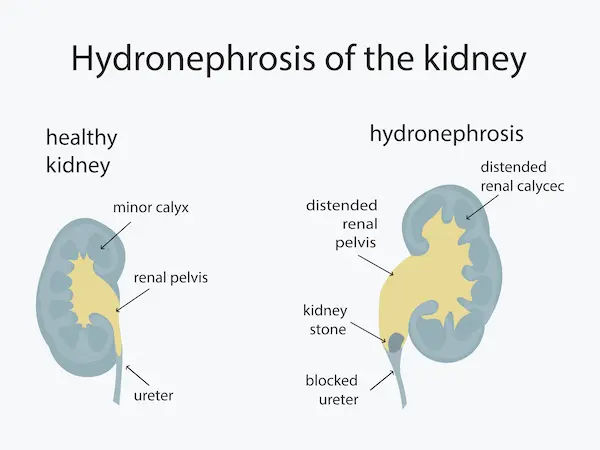Guide to What Best Treatment Hydrocephalus
Hydrocephalus treatment options can be complex. Explore this comprehensive guide on the best management strategies, including shunts and endoscopy, to understand your choices and outlook.

Written by Dr. Siri Nallapu
Reviewed by Dr. Shaik Abdul Kalam MD (Physician)
Last updated on 29th Oct, 2025

Introduction
Hydrocephalus is a condition where cerebrospinal fluid (CSF) builds up inside the brain’s fluid spaces (ventricles), raising pressure and stretching delicate tissue. Because hydrocephalus has different causes and age-specific patterns—from babies born with blocked CSF pathways to adults with normal pressure hydrocephalus (NPH)—there isn’t a single “one-size-fits-all” solution. The best treatment for hydrocephalus depends on the type, cause, and your unique anatomy and health goals.
In this guide, we show how clinicians choose the best hydrocephalus treatment for each situation. You’ll learn how hydrocephalus is diagnosed, when a shunt is better than an endoscopic third ventriculostomy (ETV), what to know about programmable valves, and how NPH is evaluated with tap tests. We’ll cover pediatric considerations, tumor-related cases, and life after surgery—plus tips to reduce complications and questions to ask your neurosurgeon. If you recognize symptoms like new balance problems, cognitive slowing, frequent falls, or a rapidly growing head in an infant, seek medical care promptly. If symptoms persist beyond two weeks or worsen, consider consulting a doctor online with Apollo24|7 for further evaluation. With the right plan, many people improve significantly and return to activities they value. Let’s help you navigate your options with confidence.
What Is Hydrocephalus?
Hydrocephalus refers to an abnormal buildup of cerebrospinal fluid (CSF) in the brain’s ventricles. CSF cushions the brain and spinal cord, delivers nutrients, and clears waste. Normally, CSF is produced by the choroid plexus, circulates through the ventricles and around the brain and spinal cord, and is reabsorbed into the bloodstream. When something blocks flow (obstructive, or “non-communicating” hydrocephalus) or impairs absorption (communicating hydrocephalus), fluid accumulates and pressure can rise, potentially damaging brain tissue.
Types you will see discussed:
- Obstructive (non-communicating): A blockage, like aqueductal stenosis or a tumor, prevents CSF from passing through normal channels. In these cases, restoring flow past the blockage (for example, with ETV) can be the best treatment.
- Communicating: CSF pathways are open, but absorption is impaired (post-meningitis, hemorrhage, or idiopathic).
These cases often benefit from shunting to divert CSF into the abdomen or heart. - Normal pressure hydrocephalus (NPH): Typically affects older adults. Despite “normal” average pressure, CSF dynamics are abnormal. The classic triad includes gait disturbance, cognitive slowing, and urinary urgency. Shunting often improves gait the most [3–5].
- Hydrocephalus ex vacuo: Ventricles appear enlarged because brain tissue has shrunk (atrophy), not because CSF is trapped. This is not treated with shunts.
Understanding the type of hydrocephalus is the starting point for choosing the best treatment and predicting outcomes.
Consult a Top General Physician
Symptoms and When to Seek Medical Care?
In infants and young children, signs differ because the skull can expand:
- Bulging or tense fontanelle (soft spot), rapidly increasing head circumference
- Irritability, poor feeding, downward gaze (“sunsetting” eyes)
- Delayed development or milestones
- In older children, teens, and adults, typical symptoms include:
- Persistent or worsening headaches (often morning-predominant), nausea/vomiting
- Vision changes, double vision, papilledema (optic disc swelling)
- Balance problems, clumsiness, or falls; cognitive difficulties; lethargy
For NPH, the classic triad is:
- Gait disturbance: short, shuffling steps, difficulty initiating walking, imbalance
- Cognitive issues: slowed thinking, attention problems, memory complaints
- Urinary urgency or incontinence
Red flags that require urgent care:
- Sudden severe headache, drowsiness, vomiting, or new neurologic deficits
- Rapid head growth in an infant or a sunsetting gaze
- Signs of shunt malfunction in someone with a shunt: headache, vomiting, fever, redness along the shunt, changes in
consciousness
If you notice persistent gait/balance changes, cognitive slowing, or urinary symptoms over weeks, especially in older adults, ask your doctor about NPH evaluation. If symptoms persist beyond two weeks, consult a doctor online with Apollo24|7 for further evaluation, and seek emergency care if symptoms escalate. Early recognition can improve outcomes significantly.
How Doctors Diagnose Hydrocephalus?
Imaging is the cornerstone. In infants with open fontanelles, cranial ultrasound can quickly screen for enlarged
ventricles at the bedside. For children and adults, CT scans are fast and detect ventricular enlargement; MRI provides more detail, showing the aqueduct, fourth ventricle, and signs of pressure-related changes such as transependymal CSF flow. Specialized MRI sequences (like phase-contrast flow studies) can support diagnoses like aqueductal stenosis and may help select candidates for endoscopic third ventriculostomy (ETV).
Testing for Normal Pressure Hydrocephalus (NPH):
- CSF tap test: Removing a moderate volume of CSF (often 30–50 mL) via lumbar puncture to see if gait or cognition improves over the next hours to days. Positive response predicts benefit from shunting, particularly for gait.
External lumbar drainage (ELD):
- CSF is drained over several days through a lumbar catheter. This has a higher predictive value than a single tap for shunt responsiveness but requires short hospitalization.
- Gait assessments and timed walking tests before and after drainage help objectify improvement.
When pressure monitoring helps?
In complex cases, neurosurgeons may use intracranial pressure (ICP) monitoring or infusion testing to understand CSF dynamics and adjust programmable valve settings postoperatively.
Diagnosis doesn’t end with imaging. The “best treatment” decision flows from imaging plus the clinical picture, age, cause, and surgical feasibility. If you’re advised to have a tap test or extended drainage trial, ask how results will link to decisions about shunt placement and valve selection.
Choosing the Best Treatment: A Simple Decision Map
There is no universal “best” hydrocephalus treatment. Instead, surgeons choose the best treatment for hydrocephalus
based on cause, anatomy, and patient factors. A plain-language decision map looks like this:
Obstructive hydrocephalus (e.g., aqueductal stenosis, posterior fossa tumor causing blockage):
- If the blockage is proximal (e.g., aqueduct), ETV is often favored in older children and adults because it restores internal flow without implants. Success is higher when the floor of the third ventricle anatomy is favorable.
- If tumor-related, Short-term external ventricular drain (EVD) may stabilize pressure; tumor resection can resolve hydrocephalus. If obstruction or CSF dynamics persist, consider ETV or shunt.
Communicating hydrocephalus (post-hemorrhage, meningitis, idiopathic in adults):
- Shunting (most often ventriculoperitoneal/VP) is typically preferred because absorption is impaired globally; ETV is less effective when there isn’t a discrete obstruction.
Normal pressure hydrocephalus (NPH):
- Evaluate with a tap test or external lumbar drainage. If gait improves, VP shunt with an adjustable (programmable) valve is commonly chosen. This allows fine-tuning to balance symptom relief and minimize overdrainage.
- Infants and young children:
- ETV alone has lower success in very young infants; ETV with choroid plexus cauterization (ETV+CPC) can improve outcomes where expertise exists. Otherwise, shunts remain common, especially for post-hemorrhagic hydrocephalus of prematurity.
Other considerations:
- Prior infections or abdominal surgeries might steer toward ventriculoatrial (VA) shunts instead of VP.
- Patient preference and lifestyle: Some prefer avoiding implants (ETV) when feasible; others value the reversibility and
adjustability of programmable shunts.
Shunt Surgery Explained: VP, VA, Programmable Valves, and More
A CSF shunt diverts fluid from the ventricles to another body cavity for absorption, most commonly the peritoneal cavity (VP shunt) or, less commonly, the atrium of the heart (VA shunt). Components include a ventricular catheter, a valve (fixed pressure or programmable), and distal tubing. Modern programmable valves can be noninvasively adjusted using a magnetic programmer, and anti-siphon/gravitational devices help reduce overdrainage when upright [2–4].
Benefits:
- Effective across many hydrocephalus types, especially communicating hydrocephalus and NPH.
- Programmable valves let clinicians personalize CSF drainage over time.
Risks and complications:
- Shunt infection (most common within 3 months of surgery): Presents with fever, redness/tenderness along the shunt track, headache, or abdominal pain (for VP shunts). Infection often requires antibiotics and shunt externalization/replacement.
- Obstruction or underdrainage: Can cause recurrent symptoms; often necessitates revision.
- Overdrainage: Headaches worse upright, subdural hygromas/hematomas; mitigated by valve adjustments and anti-siphon features.
- Revision rates: In children, shunt failure within 1–2 years is commonly reported in the 30–40% range, with many needing multiple revisions over a lifetime; adult failure rates are lower but not negligible.
Living with a shunt:
- Avoid strong magnets near programmable valves unless supervised; MRI is generally safe, but it may reset the valve—most centers check and adjust after MRI.
- Recognize shunt malfunction signs early. Keep a “shunt card” noting your valve type and settings.
- Infection prevention: Follow incision care instructions, report fevers or wound changes promptly.
Endoscopic Third Ventriculostomy (ETV) ± Choroid Plexus Cauterization (CPC)
ETV creates a small opening in the floor of the third ventricle to bypass an upstream blockage and let CSF flow into the
basal cisterns. It’s most effective in obstructive hydrocephalus (e.g., aqueductal stenosis). In experienced hands, ETV
can avoid an implanted device and its long-term revision risks.
Who benefits most:
- Older children and adults with a clear anatomic obstruction and favorable third ventricular floor anatomy.
- Patients with aqueductal stenosis or fourth ventricular outlet obstruction.
- Less effective in purely communicating hydrocephalus.
ETV+CPC:
- In very young infants, especially under 1 year, ETV alone has lower success. Adding choroid plexus cauterization reduces CSF production and can raise success rates in selected patients where expertise exists. Programs using
ETV+CPC (notably in resource-limited settings) have reported meaningful shunt-free rates for infant hydrocephalus in certain etiologies.
Success rates and follow-up:
- Adult and older pediatric ETV success is often reported in the 60–80% range for appropriate candidates; infant success is more variable and etiology-dependent.
- Failures usually declare early (weeks to months). Late closure can occur; periodic clinical follow-up and imaging are important.
- If ETV fails, shunting remains an option.
Treating Normal Pressure Hydrocephalus (NPH)
NPH predominantly affects older adults and is often underdiagnosed. The best treatment for normal pressure
hydrocephalus generally involves a VP shunt with a programmable valve after confirming the likely benefit using a tap test or external lumbar drainage.
Predicting response:
- Tap test: Short-term gait improvement after CSF removal supports proceeding to shunting. Cognition may improve
more slowly, and urinary symptoms often improve but can lag behind gait. - Extended drainage: Offers higher predictive value for shunt responsiveness in equivocal cases but requires
hospitalization.
What does improvement look like?:
- Gait improvement is the most reliable and often appears within days to weeks after shunting. Timed Up-and-Go and
stride length measures objectify progress. - Cognitive and urinary improvements may follow over weeks to months.
- Reported improvement rates vary; many centers quote 60–80% gait improvement with modern selection and
programmable valves, with overall complication rates in the 10–20% range (including subdural collections and
infections).
Rehabilitation and comorbidities:
- Physical therapy focusing on balance and gait can amplify benefits. Address vision and foot issues to reduce falls.
- Manage vascular risk factors (hypertension, diabetes) and sleep apnea to support cognition.
- Valve adjustments can fine-tune outcomes; multiple visits in the first 3–6 months are common.
If symptoms persist or you’re unsure whether your pattern fits NPH, consider a teleconsultation with Apollo24|7 to discuss whether a tap test or imaging review is appropriate and whether a local referral to a neurosurgery center is needed.
Pediatric Hydrocephalus: Special Scenarios and Long-Term Outlook
Children can develop hydrocephalus from congenital anomalies (like aqueductal stenosis, Dandy–Walker), intraventricular hemorrhage of prematurity, infections, or tumors. The best treatment for hydrocephalus in children balances near-term pressure relief with lifetime device management and neurodevelopmental needs.
Post-hemorrhagic hydrocephalus (PHH) of prematurity:
- Initial management can include temporizing measures such as serial lumbar punctures, ventricular reservoir taps (Ommaya), or an external ventricular drain until the infant is stable and large enough for definitive treatment.
- Many infants ultimately require a VP shunt; some may be ETV candidates as they grow, depending on anatomy.
Congenital obstructive causes (e.g., aqueductal stenosis):
- ETV becomes more effective as children get older; some centers consider ETV even in toddlers if the anatomy is favorable and the ETV Success Score is acceptable.
- In infants, ETV+CPC may improve success in selected cases when experienced surgeons are available.
Long-term outlook:
- Shunt dependency often means periodic revisions over time; families should be taught to recognize shunt malfunction early.
- Neurodevelopmental support (early intervention, occupational/physical/speech therapy, school accommodations) maximizes outcomes.
- Adolescents transitioning to adult care need a structured handoff, as shunt issues can recur decades later.
Hydrocephalus From Tumors, Infection, or Hemorrhage
In acquired hydrocephalus, the best hydrocephalus treatment is often staged.
Tumor-related hydrocephalus:
- Acute management may use an external ventricular drain (EVD) to quickly control pressure. Tumor removal can restore CSF flow; some patients need no permanent diversion thereafter.
- If blockage or CSF absorption problems persist, ETV or shunt placement may follow, chosen based on anatomy and oncologic plan.
Infection-related hydrocephalus:
- Prioritize infection control. Temporary EVD plus targeted antibiotics are typical; permanent shunting is deferred until CSF cultures are sterile to reduce shunt infection risk.
Hemorrhage-related hydrocephalus:
- Subarachnoid or intraventricular hemorrhage can acutely block CSF pathways. EVD stabilizes pressure; over time, some patients recover normal CSF handling, while others require permanent shunting.
Ommaya reservoirs:
- In infants and some adults, a subcutaneous reservoir connected to the ventricle allows periodic CSF taps as a bridge to definitive therapy or for intrathecal medications.
Life After Surgery: Recovery, Follow-Up, and Daily Living
Right after surgery, expect a short hospital stay and early follow-up to check wounds and, for programmable valves,
confirm the setting. Many patients with NPH notice gait benefits within days; others need several weeks and valve
adjustments. Children often rebound quickly but require close monitoring for sleep, feeding, and head growth.
Daily living:
- Activity: Most return to light activity within 2–4 weeks; full activity depends on surgeon advice. Contact sports are
generally discouraged with shunts; discuss case-by-case. - Travel: Carry your shunt/ETV information; know nearby neurosurgical centers when traveling. Cabin pressure changes
are usually well tolerated. - MRI safety: Most shunts are MRI-conditional; programmable valves may need rechecking after MRI. Keep your valve card handy.
- Infection vigilance: Watch for fevers, redness along the shunt path, new headaches, or abdominal pain (VP shunt).Good hand hygiene and prompt wound care matter.
- Mental health and support: Anxiety about shunt dependency is normal. Peer groups (e.g., Hydrocephalus Association) and counseling can help.
Follow-up:
- Early and periodic assessments: Symptoms, gait testing (for NPH), head circumference in infants, and imaging as advised.
- Planned valve adjustments optimize outcomes. Bring a symptom diary and note posture-related headaches (possible overdrainage).
- Nutrition, sleep, and exercise support brain recovery. If your condition does not improve after reasonable adjustments, book a physical visit to a doctor with Apollo24|7 or your local neurosurgery clinic to reassess imaging and settings.
Costs, Access, and Getting a Second Opinion
Costs vary by country, hospital, and device type. Programmable valves can cost more upfront but may reduce revisions and clinic visits by enabling noninvasive adjustments. Insurance often covers medically necessary imaging, surgery, and devices, but copays and device coverage differ.
Access and second opinions:
- Consider a center with dedicated hydrocephalus or endoscopic neurosurgery expertise, especially for ETV or complex NPH evaluations.
- A second opinion is reasonable if recommendations differ (e.g., ETV vs shunt) or if you want confirmation of the plan.
Questions to ask your neurosurgeon:
- Is my hydrocephalus obstructive or communicating, and why?
- Am I a candidate for ETV? What is my estimated ETV Success Score?
- If I need a shunt, which valve will you use, and how will we adjust it over time?
- What are your infection and revision rates, and how do they compare to benchmarks?
- What is the plan if the first approach doesn’t work?
Emerging Research and Future Directions
Innovation focuses on reducing complications and tailoring therapy:
- Smarter valves and telemetry: Research aims at valves that monitor flow/pressure and transmit data for remote
adjustments, potentially catching problems earlier. - Better selection for NPH: Combining gait analytics, advanced MRI biomarkers, and CSF dynamics may improve the
prediction of shunt benefit and reduce unnecessary procedures. - ETV and ETV+CPC technique refinement: Expanding safe candidacy to select infants and refining tools for complex
anatomy. - Global health: In regions with limited access to shunt revisions, ETV and ETV+CPC can reduce shunt dependency,
with training programs improving outcomes. - Clinical trials: Check reputable registries for ongoing studies in valve technology, NPH diagnostics, and infection
prevention.
Conclusion
Hydrocephalus is a complex condition with many faces—from infants with congenital blockages to older adults with normal pressure hydrocephalus. That’s why the best treatment for hydrocephalus isn’t a single procedure but a matched plan built on cause, anatomy, and patient goals. In broad strokes, shunts remain the workhorse for communicating hydrocephalus and NPH, with modern programmable valves enabling individualized care and fewer reoperations. ETV (with or without choroid plexus cauterization) offers a shunt-free route in selected obstructive cases, especially in older children and adults, and in infants when specialized expertise is available. Across all scenarios, success hinges on careful diagnosis, shared decision-making, and meticulous follow-up.
Consult a Top General Physician
Consult a Top General Physician

Dr. Tapabrata Ray
General Physician/ Internal Medicine Specialist
4 Years • MBBS,DGM,CPMeC,ACMDC
Kolkata
MCR SUPER SPECIALITY POLY CLINIC & PATHOLOGY, Kolkata
Dr. Paras Gangwal
General Physician/ Internal Medicine Specialist
28 Years • MBBS,MD General Medicine
Delhi
Dr Paras Gangwal Clinic, Delhi

Dr Aakash Andgi
General Physician/ Internal Medicine Specialist
9 Years • MBBS MD
Bengaluru
Apollo Clinic, JP nagar, Bengaluru

Dr. Sourav Kundu
General Physician/ Internal Medicine Specialist
9 Years • MBBS , MD (General medicine)
Kolkata
HealthYou Speciality Clinic & Diagnostics., Kolkata

Dr Bhargav Vuppumalla
General Physician/ Internal Medicine Specialist
5 Years • MBBS MD GENERAL MEDICINE
Bengaluru
Apollo Medical Center, Marathahalli, Bengaluru
Consult a Top General Physician

Dr. Tapabrata Ray
General Physician/ Internal Medicine Specialist
4 Years • MBBS,DGM,CPMeC,ACMDC
Kolkata
MCR SUPER SPECIALITY POLY CLINIC & PATHOLOGY, Kolkata
Dr. Paras Gangwal
General Physician/ Internal Medicine Specialist
28 Years • MBBS,MD General Medicine
Delhi
Dr Paras Gangwal Clinic, Delhi

Dr Aakash Andgi
General Physician/ Internal Medicine Specialist
9 Years • MBBS MD
Bengaluru
Apollo Clinic, JP nagar, Bengaluru

Dr. Sourav Kundu
General Physician/ Internal Medicine Specialist
9 Years • MBBS , MD (General medicine)
Kolkata
HealthYou Speciality Clinic & Diagnostics., Kolkata

Dr Bhargav Vuppumalla
General Physician/ Internal Medicine Specialist
5 Years • MBBS MD GENERAL MEDICINE
Bengaluru
Apollo Medical Center, Marathahalli, Bengaluru
More articles from Hydronephrosis
Frequently Asked Questions
1) Is ETV better than a VP shunt?
It depends on the cause. For obstructive hydrocephalus (like aqueductal stenosis), ETV can be the best option and avoids implants. For communicating hydrocephalus and NPH, a VP shunt is usually more effective. Discuss VP shunt vs ETV with your neurosurgeon based on imaging and age.
2) How do doctors know if a shunt will help normal pressure hydrocephalus?
They often use a CSF tap test or short-term drainage. If gait improves, a programmable VP shunt is likely to help. The best treatment for normal pressure hydrocephalus is fine-tuned after surgery with valve adjustments.
3) What are the signs of shunt infection or malfunction?
Fever, redness or tenderness along the shunt, worsening headaches, vomiting, confusion, or abdominal pain (VP shunt). These are shunt infection symptoms that need urgent care.
4) Can infants have ETV instead of a shunt?
In infants, ETV success is lower, but adding choroid plexus cauterization (ETV+CPC) can help in selected cases where expertise exists. Many infants still need VP shunts, especially with post-hemorrhagic hydrocephalus.
5) How long do shunts last?
There is no fixed lifespan. Adults may go many years without issues; children have higher revision rates. Lifelong follow-up is important, and programmable shunt valves can reduce revision needs by allowing noninvasive adjustments.
